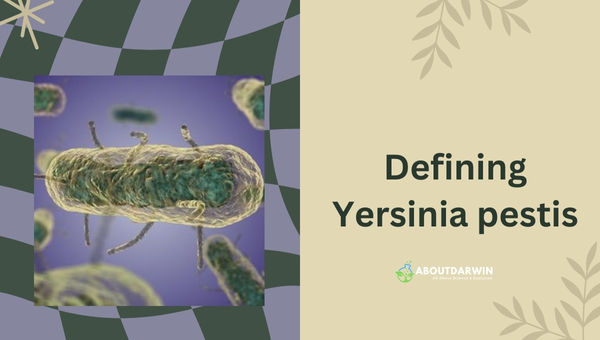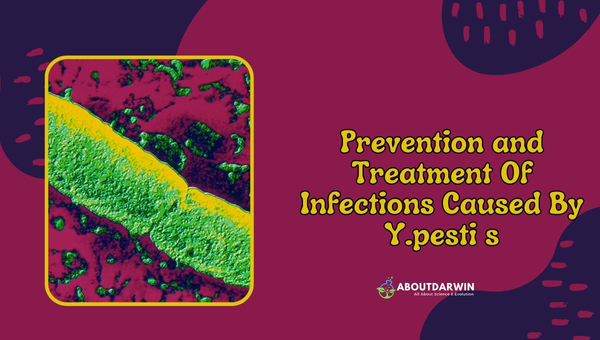Physical Address
304 North Cardinal St.
Dorchester Center, MA 02124
When I think of infamous bacteria, the one that always comes to mind is Yersinia pestis. As the culprit behind some of the deadliest pandemics in human history, including the Black Death in the 14th century, which killed millions, it’s a bacterium that certainly merits investigation.
This blog post aims to delve into and demystify this fascinating microbe. Through an exploration of its life cycle to typical diseases it causes, biochemical tests for its identification, and crucially, how we can prevent and treat infections caused by it – you’ll gain a comprehensive understanding of Yersinia pestis. So, let’s dive in!
| Basic Characteristics | Properties (Yersinia pestis) |
|---|---|
| Hemolysis | Negative (-ve) |
| Catalase | Positive (+ve) |
| Nitrate Reduction | Positive (+ve) |
| VP (Voges Proskauer) | Negative (-ve) |
| Indole | Negative (-ve) |
| Gelatin Hydrolysis | Negative (-ve) |
| Citrate | Negative (-ve) |
| Urease | Negative (-ve) |
| MR (Methyl Red) | Positive (+ve) |
| OF (Oxidative-Fermentative) | Facultative anaerobes |
| Gas | Negative (-ve) |
| H2S | Negative (-ve) |
| Shape | Rods |
| Motility | Non-Motile |
| Flagella | Non-Flagellated |
| Spore | Negative (-ve) |
| Gram Staining | Negative (-ve) |
| Oxidase | Negative (-ve) |
| Capsule | Positive (+ve) |
| Adonitol | Negative (-ve) |
| Arabinose | Positive (+ve) |
| Cellobiose | Positive (+ve) |
| Dulcitol | Negative (-ve) |
| Glucose | Positive (+ve) |
| Glycerol | Variable |
| Lactose | Negative (-ve) |
| Maltose | Positive (+ve) |
| Mannitol | Positive (+ve) |
| Mannose | Positive (+ve) |
| Melibiose | Variable |
| Mucate | Negative (-ve) |
| MyoInositol | Negative (-ve) |
| Raffinose | Negative (-ve) |
| Rhamnose | Negative (-ve) |
| Salicin | Variable |
| Sorbitol | Variable |
| Sorbose | Negative (-ve) |
| Sucrose | Negative (-ve) |
| Tartrate | Negative (-ve) |
| Trehalose | Positive (+ve) |
Contents
As a biologist, I am fascinated by the complexity and diversity of biological organisms, and one such organism that piques my curiosity is Yersinia pestis. It’s an interesting bacterium with a particularly infamous reputation as it was the causative agent behind the deadly plague pandemic known as the Black Death in the 14th century.

Yersinia pestis is a gram-negative, rod-shaped bacterium belonging to the family Enterobacteriaceae. It appears bipolar or safety pin-shaped when Gram-stained. This peculiar trait arises from its unique ability not to take up stains except in its polar regions, giving it a unique appearance under the microscope.
This bacteria’s life cycle often involves fleas and rats, although it can infect various other mammals. The bacterium enters human bodies via flea bites and latches onto cells lining our lungs or skin. Within these host cells, Yersinia pestis multiplies until they rupture—releasing more bacteria that continue this destructive cycle.
I’d like to start our deep dive into Yersinia pestis by detailing its life cycle. However, I feel it’s crucial to note that this bacteria is an exception in the sense that it doesn’t really have a typical ‘life cycle’ as with many other bacteria. Instead, Yersinia pestis has more of an infectious pathway. The steps are as follows:
Also Read: Coombs Test: Unraveling Its Principles, Types & Procedure
Let’s delve into the signs, symptoms, and conditions associated with Yersinia Pestis- a bacterium that is known to trigger serious illnesses. Special emphasis will be given to exploring early warning signs that may lead to fast detection and effective treatment.
In addition to these diseases directly associated with Yersinia pestis bacteria, it should be noted that any prolonged infection can lead to weakening one’s immune system, thereby making them vulnerable to secondary infections (like pneumonia). Therefore, early detection and proper medical attention are vital.
Once it’s suspected that Yersinia pestis might be the culprit behind an infection, a range of biochemical tests are carried out to confirm its presence. These tests include:
Each positive or negative reaction adds up like pieces of a puzzle, allowing definitive identification of Yersinia pestis.
The identification of Yersinia pestis has been revolutionized by the development of molecular techniques, providing a high degree of sensitivity and speed. One of these is the Polymerase Chain Reaction method (PCR).
I find PCR quite exciting—it amplifies only specific DNA sequences that are unique to Yersinia pestis—giving me reliable results almost every time. This genetic fingerprinting guides me to detect and identify this bacterium with great precision.
There are also newer molecular techniques that are being adopted for detecting Yersinia pestis, which are stimulating; one such technique is loop-mediated isothermal amplification (or LAMP for short).
It’s fascinating because it allows detection at a constant temperature without the need for thermal cycling, like in traditional PCR methods. LAMP offers potential benefits such as reducing cost, shortening response times, and enhancing nucleic acid amplification sensitivity.
Understanding the role of Polymerase Chain Reaction (PCR) in identifying Yersinia pestis is like unwrapping an exciting scientific secret. For starters, I often refer to PCR as a kind of photocopying machine for DNA—because that’s essentially what it does!
PCR greatly aids in the identification of Yersinia pestis by amplifying its unique bacterial DNA sequences present within a sample.
This bacteria has specific genetic markers or lines that can be targeted elevated to detectable levels using PCR—which makes even minute traces of Yersinia pestis impossible to miss for scientists like me. Isn’t it wonderful when technological advances meet biology’s complexity?
Also Read: Streptococcus Pneumoniae: Identification & Biochemical Tests
As someone who deals with microscopic organisms daily, I know all too well that prevention is always preferable to treatment when it comes to bacterial infections. For Yersinia pestis, the same principle applies.

Preventing infection often revolves around avoiding contact with infected animals, primarily rats and fleas. We should maintain high standards of personal hygiene and sanitation to deter these carriers from colonizing living spaces.
If you’re in an area where Yersinia pestis infection is common or if there’s an outbreak, do take preventive measures seriously.
Protecting your pets from flea infestations can help prevent the spread of this disease. When camping or spending time outdoors in affected regions, use insect repellents and wear long-sleeved shirts and long pants.
Despite our best preventive efforts, sometimes infection occurs. If that happens, Yersinia pestis infection can thankfully be treated quite effectively using antibiotics like doxycycline or streptomycin— but only if treatment starts early!
A delayed response allows complications like septicemia (blood poisoning) or pneumonic plague (lung-related plague) to develop, which complicates treatment markedly.
On a broader scale for high-risk populations, such as personnel in laboratories working with the bacterium directly, a vaccine has been developed for added protection against potential exposure; however, its use remains somewhat limited due to variable levels of effectiveness reported by different studies.
When it comes to treating infections caused by Yersinia pestis, we are fortunate that modern medicine offers us effective solutions. Antibiotics are the first line of defense and must be started as soon as possible after the onset of symptoms to maximize their effectiveness.
Several types of antibiotics can treat the plague. Among them, streptomycin and gentamicin have proven particularly effective against Yersinia pestis. These antibiotics work by inhibiting bacterial protein synthesis, thereby halting the growth and spread of the bacteria within our bodies.
Other antibiotics like doxycycline or ciprofloxacin may also be used in cases where streptomycin or gentamicin is not available or appropriate. Again, it’s imperative here to remind everyone that these treatment plans must be under strict medical supervision. No one should self-medicate without consulting your healthcare provider first.
In cases where infected tissues develop into abscesses or necrotic tissue (gangrene), surgical intervention may become necessary. Nonetheless, early diagnosis and prompt administration of antibiotics significantly increase survival rates from diseases caused by Yersinia pestis infection.
Also Read: O Antigen and H Antigen – Unraveling Our Body’s Heroes
Major characteristics of Yersinia pestis: Gram stain morphology: Gram-negative rods, 0.5 x 1-2 µm Colony morphology: Slow growing, pinpoint colonies after 24h; colonies are 1-2 mm, gray-white to slightly yellow and opaque on BAP after 48 h; non-lactose fermenter on MAC/EMB; growing both at 25-28°C and at 35-37°C.
Yersinia are a group of Gram-negative, non-spore-forming, oxidase-negative, catalase-positive, lactose-negative, and facultative anaerobic rods (or coccobacilli).
Yersinia pestis is a small, Gram-negative coccobacillus that frequently shows strong bipolar staining. However, pleomorphic and club-shaped forms are not unusual.
Note the safety pin appearance of Yersinia pestis. Magnification ×1000. Wayson stain. Wayson stain is used along with Giemsa and Wright’s stains to rapidly detect potential biowarfare attacks.
In conclusion, Yersinia pestis is a unique bacteria with complex genetic characteristics. Understanding its structure, life cycle, and how it interacts with its hosts is of great importance.
Biochemical tests alongside advanced molecular techniques have proven to be crucial in the prompt and accurate identification of this pathogen – a factor that plays an undeniable role in administering the right treatment.
Its infamous contribution to history underscores the importance of preventive measures like maintaining proper hygiene and regularly improving public sanitation systems.
Technological advancements continue to revolutionize detection methods, helping us stay a step ahead in preventing another pandemic. I look forward to exploring more about Yersinia pestis as our scientific knowledge continues to expand.